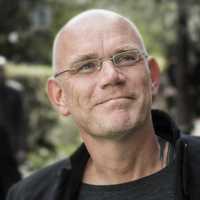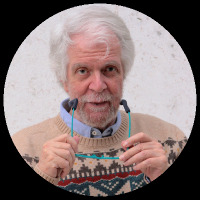Journal Papers by Hong Vu
Journalism Studies, 2023
Using survey and content analysis, this study investigates professional role conception and role ... more Using survey and content analysis, this study investigates professional role conception and role performance among journalists in Vietnam, which offers a unique case to further our understanding of journalism ideals and practices in a socialist-communist country. This study combines the concept of professional role and the hierarchy of influences model as its theoretical frameworks. Findings indicated that organizational factors (i.e., funding and audience orientation) exert stronger influences on journalists' role conception, performance, and the perceived-practiced gaps. Theoretical implications are discussed.
Health Communication, 2023
This experimental study investigates the effects of several heuristic cues and systematic factors... more This experimental study investigates the effects of several heuristic cues and systematic factors on users’ misinformation susceptibility in the context of health news. Specifically, it examines whether author credentials, writing style, and verification check flagging influence participants’ intent to follow article behavioral recommendations provided by the article, perceived article credibility, and sharing intent. Findings suggest that users rely only on verification checks (passing/failing) in assessing information credibility. Of the two antecedents to systematic processing, social media self-efficacy moderates the links between verification and participants’ susceptibility. Theoretical and practical implications are discussed.

Online Media and Global Communication, 2023
This study investigates the influence of individual-and country-level factors on citizen members'... more This study investigates the influence of individual-and country-level factors on citizen members' attitude and actions regarding plastic waste. At the individual level, it assesses the influence of the diversity of environmental news use from traditional media, online social networks, and other internet sources on the public's support for policy and green behaviors related to plastic waste. Design/methodology/approach: We utilized secondary survey data collected from 27 European countries by Eurobarometer. Results: The two-level analysis show that several individual factors including gender, age, political ideology, risk perception, and most importantly diversity of sources in environmental news use, from all three types of media sources, was positively associated with participants' policy support and green behaviors related to plastic waste. This research also found the influence of several country-level variables on green behaviors toward plastic waste. Implications: When assessing support for plastic waste control, various factors at both levels (i.e., country and individual) need to be considered to mobilize the public. Article note: This article underwent double-blind peer review.
Journalism & Mass Communication Quarterly, 2022
This study examines climate claims by analyzing fact-checked content from four countries. Additio... more This study examines climate claims by analyzing fact-checked content from four countries. Additionally, it investigates several important aspects of professional fact-checking practices including transparency, accessibility, and the use of corrective sources. Findings of this study
indicate that fact-checked climate claims from different countries vary by the aspects of climate change they focus on (e.g., existence, causes, impacts, and solutions), types of claim makers, and levels of accuracy. Furthermore, there are differences in fact-checking practices from the four
countries with regards to transparency, accessibility, and the use of corrective sources. Theoretical and practical implications of the findings are discussed.

Digital Journalism, 2021
Nowadays, misinformation and hoaxes travel faster than they did
in the past, mostly thanks to the... more Nowadays, misinformation and hoaxes travel faster than they did
in the past, mostly thanks to the emergence of digital platforms
and the popularization of social networking sites. Scholars have
found that journalists have turned social media platforms into
essential components of their professional operations. However,
the extent to which journalists engage in debunking misinformation
on social media is still unclear. By conducting a U.S.
Nationally representative survey with more than 400 journalists,
this study delves into journalists’ perceptions of false information,
social media use, and debunking actions to expose misleading
content in online contexts. Our findings indicate low levels of
debunking, although we found factors associated with journalists
either confronting or reporting misinformation. On the one hand,
journalists who use social media platforms to develop their
brands and engage directly with their audiences are more likely
to publicly confront misinformation. On the other hand, journalists
who believe social media companies should be held accountable
for the spread of fake news do not engage directly in
confronting false information, but do report it when they encounter
it. Taken together, our findings suggest the journalist-audience
relationship plays a central role to understand debunking behaviors
in online spaces.

Journal of American College Health, 2021
Objective: Media framing of health issues reflects public opinion and impacts readers' perception... more Objective: Media framing of health issues reflects public opinion and impacts readers' perceptions and behavior. This study examines how meditationa recommended stress coping strategy for college studentsis framed in campus newspapers from 1997-2018. Participants: A total of 494 articles were analyzed. Methods: Semantic network analysis was used to automatically detect frames and the longitudinal trend. Results: Five major frames emerged: (1) building a meditation community within a campus community, (2) meditation benefits, (3) yoga for enhancing mind and body awareness, (4) meditation techniques, and (5) secularizing meditation on campus. There is a shift in coverage from interest in religion to secular views of health benefits throughout the years. Discussions of adverse effects that have emerged from the literature were entirely absent. Conclusions: The trend of secularizing meditation practices on college campuses is evident. Emphasizing the techniques and benefits could encourage participation and build a learning community.
This study revisited the state-press relations theory by analyzing the coverage of Vietnam over t... more This study revisited the state-press relations theory by analyzing the coverage of Vietnam over the 30 years between 1980 and 2009 in two leading U.S. news magazines, Time and
Agenda-setting has evolved from a focus on media effects on the public's perception of the most i... more Agenda-setting has evolved from a focus on media effects on the public's perception of the most important issues of the day to a theory elaborating a hierarchy of communication effects. Its core is three levels of agenda-setting. The initial two levels were introduced during the first decade of research. Level three is recent. Evidence from the initial studies on this expanded view of agenda setting supports the Network Agenda Setting Model. This theoretical model asserts that the news media can bundle sets of objects or attributes and make these bundles of elements salient in the public's mind simultaneously.
Soap operas as a matchmaker: A cultivation analysis of the effects of South Korean TV dramas on Vietnamese women’s marital intention. Journalism & Mass Communication Quarterly
Coverage of the Iraq War in the United States, Mainland China, Taiwan and Poland. Journalism Studies
Asian Journal of Communication , 2018
Journalism & Mass Communication Quarterly
This study examines the Network Agenda Setting Model, the third level of agenda-setting theory. I... more This study examines the Network Agenda Setting Model, the third level of agenda-setting theory. It seeks to expand the model’s scope by testing five years (2007-2011) of aggregated data from national news media and polls. The study finds evidence that the news media bundled issue objects and made them salient in the public’s mind. Findings of the study also demonstrate strong network correlations of issue salience among different types of news media.
Journalism & Mass Communication Quarterly
This study combines two research methods to explore how female leaders are portrayed in the news ... more This study combines two research methods to explore how female leaders are portrayed in the news in Vietnam, and Vietnamese journalists' perception of female and male leaders. Content analysis indicated that female leaders are under-and misrepresented. Female leader sources seldom appear in the news. When they do, they are more likely to be interviewed on traditionally feminine issues. Survey findings demonstrated that gender stereotypes are pervasive among journalists, influencing their perception of news sources. Journalists believe male sources possess stronger work-oriented and agentic traits while female sources are more socially oriented and communal. Results confirmed role congruity theory's applicability in studying media in a non-Western country.
Media vs. reality Who sets the public agenda on health
The Agenda Setting Journal
This study advances agenda-setting theory by applying it to understand the media influence on the... more This study advances agenda-setting theory by applying it to understand the media influence on the public's perception of health issues. The longitudinal analysis compared news indices, public opinion polls, and reality indicators in the United States from 2001 to 2010. The results show that news media, especially print media, did have some agenda-setting effects on the public's health priorities. However, the coverage had little to do with reality and, ironically, the media representation of certain health issues showed an opposite trend to that of the reality indicators. These findings call into question the responsibility of journalists in providing a complete and proportional representation of health concerns.
Global Environmental Change, 2019
This study investigates the news coverage of climate change in 45 different countries and territo... more This study investigates the news coverage of climate change in 45 different countries and territories. Using the news framing approach, this study identifies the connections between several national socioeconomic, governance, and environmental traits and the portrayals of climate change. Although climate change is a global issue that affects every country in the world, how the news media frame it varies from country to country. Such a variation is related to each country’s economic development, climate severity, and governance. The findings of this study contribute to framing literature by assessing frame use in national contexts, filling in the gap in the application of this theoretical framework.

International Journal of Communication, 2019
Using the 2016 European Commission's Eurobarometer survey, this study analyzed how a multitude of... more Using the 2016 European Commission's Eurobarometer survey, this study analyzed how a multitude of factors are associated with identification and intention of following proper antibiotic treatment. Multilevel analyses showed that knowledge and information from medical professionals and mass media (individual-level predictors), and advanced access to education (a structural-level factor) are associated with identification. For intention, structural factors (Access to Information & Communications, Health & Wellness, Nutrition & Basic Medical Care) contributed significant variances to the model, in addition to the individual-level effects (sources and trust in medical professionals and mass media). Results demonstrate a need to consider these structural-level influences to shed light on the process though which antibiotic resistance preventions and interventions might impact individuals' health literacy and behavioral outcomes.
First Monday, 2019
Since 2016, online social networks (OSNs), especially their "big data" algorithms, have been inte... more Since 2016, online social networks (OSNs), especially their "big data" algorithms, have been intensively blamed in popular news discourse for acting as echo chambers. These chambers entrap like-minded voters in closed ideological circles that cause serious damage to democratic processes. This study examines this "echo chamber" argument through the rather divisive case of EU politics among EU citizens. Based on an exploratory secondary analysis of the Eurobarometer 86.2 survey dataset, we investigate whether the reliance on OSNs as a primary EU political news source can lead people to more polarisation in EU-related political beliefs and attitudes than a reliance on traditional media. We found little evidence for this polarisation, lending credence to a rejection of social media's "echo chamber" effect.
First Monday, 2019
Since 2016, online social networks (OSNs), especially their "big data" algorithms, have been inte... more Since 2016, online social networks (OSNs), especially their "big data" algorithms, have been intensively blamed in popular news discourse for acting as echo chambers. These chambers entrap like-minded voters in closed ideological circles that cause serious damage to democratic processes. This study examines this "echo chamber" argument through the rather divisive case of EU politics among EU citizens. Based on an exploratory secondary analysis of the Eurobarometer 86.2 survey dataset, we investigate whether the reliance on OSNs as a primary EU political news source can lead people to more polarisation in EU-related political beliefs and attitudes than a reliance on traditional media. We found little evidence for this polarisation, lending credence to a rejection of social media's "echo chamber" effect.
Digital Journalism, 2020
Surveying journalists in Vietnam, a socialist-communist country, this study attempts to bring ins... more Surveying journalists in Vietnam, a socialist-communist country, this study attempts to bring insights into the effects of digital platforms on newsroom practices. Specifically, it looks at how journalists from mainstream news media organizations routinize the use of Facebook for various professional purposes. Additionally, this research examines journalists' role conceptions and how these values influence news workers' use of Facebook. Its findings show that journalists in this Southeast Asian country are embracing Facebook in their reporting, understanding audience, and branding. Results also indicate that the two important predictors of journalists' Facebook use for work are the interpretive and populist-mobilizer functions of the news media. Theoretical implications of those findings are discussed in the context of a socialist-communist media system.











Uploads
Journal Papers by Hong Vu
indicate that fact-checked climate claims from different countries vary by the aspects of climate change they focus on (e.g., existence, causes, impacts, and solutions), types of claim makers, and levels of accuracy. Furthermore, there are differences in fact-checking practices from the four
countries with regards to transparency, accessibility, and the use of corrective sources. Theoretical and practical implications of the findings are discussed.
in the past, mostly thanks to the emergence of digital platforms
and the popularization of social networking sites. Scholars have
found that journalists have turned social media platforms into
essential components of their professional operations. However,
the extent to which journalists engage in debunking misinformation
on social media is still unclear. By conducting a U.S.
Nationally representative survey with more than 400 journalists,
this study delves into journalists’ perceptions of false information,
social media use, and debunking actions to expose misleading
content in online contexts. Our findings indicate low levels of
debunking, although we found factors associated with journalists
either confronting or reporting misinformation. On the one hand,
journalists who use social media platforms to develop their
brands and engage directly with their audiences are more likely
to publicly confront misinformation. On the other hand, journalists
who believe social media companies should be held accountable
for the spread of fake news do not engage directly in
confronting false information, but do report it when they encounter
it. Taken together, our findings suggest the journalist-audience
relationship plays a central role to understand debunking behaviors
in online spaces.
indicate that fact-checked climate claims from different countries vary by the aspects of climate change they focus on (e.g., existence, causes, impacts, and solutions), types of claim makers, and levels of accuracy. Furthermore, there are differences in fact-checking practices from the four
countries with regards to transparency, accessibility, and the use of corrective sources. Theoretical and practical implications of the findings are discussed.
in the past, mostly thanks to the emergence of digital platforms
and the popularization of social networking sites. Scholars have
found that journalists have turned social media platforms into
essential components of their professional operations. However,
the extent to which journalists engage in debunking misinformation
on social media is still unclear. By conducting a U.S.
Nationally representative survey with more than 400 journalists,
this study delves into journalists’ perceptions of false information,
social media use, and debunking actions to expose misleading
content in online contexts. Our findings indicate low levels of
debunking, although we found factors associated with journalists
either confronting or reporting misinformation. On the one hand,
journalists who use social media platforms to develop their
brands and engage directly with their audiences are more likely
to publicly confront misinformation. On the other hand, journalists
who believe social media companies should be held accountable
for the spread of fake news do not engage directly in
confronting false information, but do report it when they encounter
it. Taken together, our findings suggest the journalist-audience
relationship plays a central role to understand debunking behaviors
in online spaces.
As the news media evolve along the datafication of society, they have seen not only a rigorous move toward data-driven journalism but also an unprecedented intrusion of audience-tracking data (called web metrics or audience analytics) into digital news production and distribution. As the move and, to some extent, the mood of news users can be effectively and efficiently tracked and quantified in real time, journalists today are equipped with an ever-powerful set of tools to inform themselves of what audiences want and do with the news, thereby to make decisions to optimise the way they select, produce and deliver the news. This represents probably the most profound transformation of the gatekeeping process in recent times, bringing both hopes and fears for the future of news and journalism. This chapter reviews the penetration of web metrics in the past decade or so in order to (a) assess their real and potential impacts on newsroom processes and relationships and (b) identify some good principles and practices that might help journalism and journalists to make the most from such data.
We will begin with a brief discussion of the relatively powerless position of the audience in traditional gatekeeping. Against this backdrop, we explain how and why web metrics have penetrated into the newsroom, as well as assess how they have impacted on both the gatekeeping process and gatekeepers’ service orientation, work ethos and autonomy. As news moves from being exclusively “what newspapermen make it” to also something that the crowd wants it to be, newsroom processes and relationships are being transformed in ways that invite more misgivings and reservations than hopes and innovations. This is because of an entire new set of metrics-induced challenges that journalism and journalists have to face today, including (a) the real risk of journalism being further tabloidised and “dumbed down”, (b) the growing unhealthy addiction to futile numbers such as clicks and views and (c) the pervasive frustrations, tensions and conflicts that result from a constant chase for such numbers. Observing developments in the past few years, however, we conclude with a more positive and optimistic note: the power of metrics can be well harnessed for a better and more sustainable future for journalism, if newsrooms devise and enforce the right audience data philosophies and policies. Such policies must go beyond crude head-counting measures to focus more on variables that help to get into deeper layers of news interest, consumption and engagement. In order for that to happen, a strong professional culture that fosters journalists’ public-service, rather than market-service, ethos as well as the autonomy they need to exercise their own news judgement for the sake of that professional ethos. Some promising examples and practices in using metrics will be introduced along the discussion.